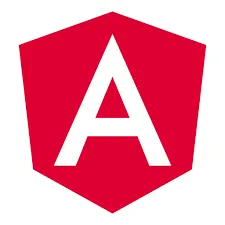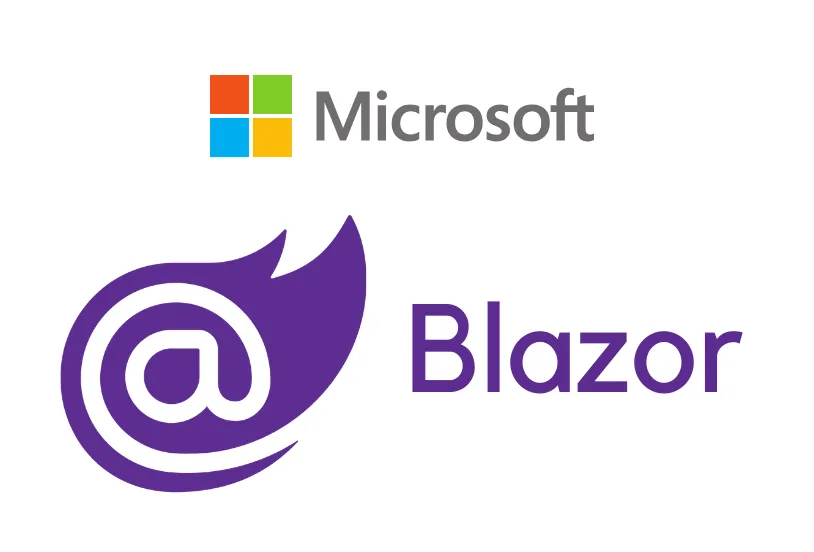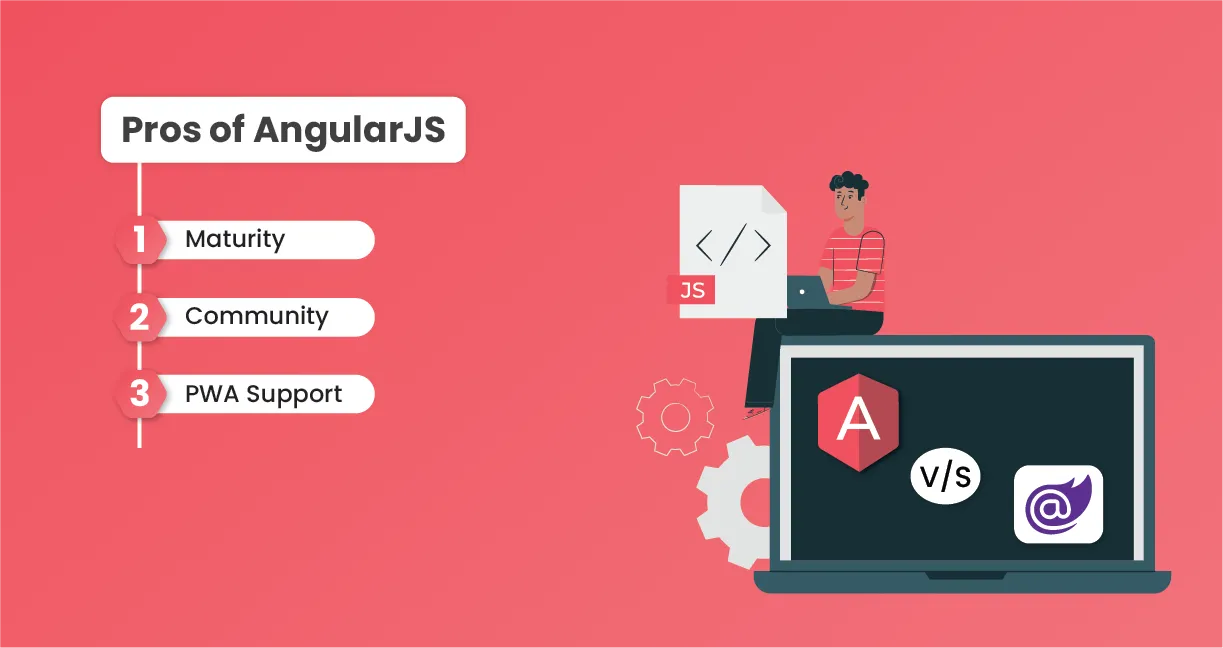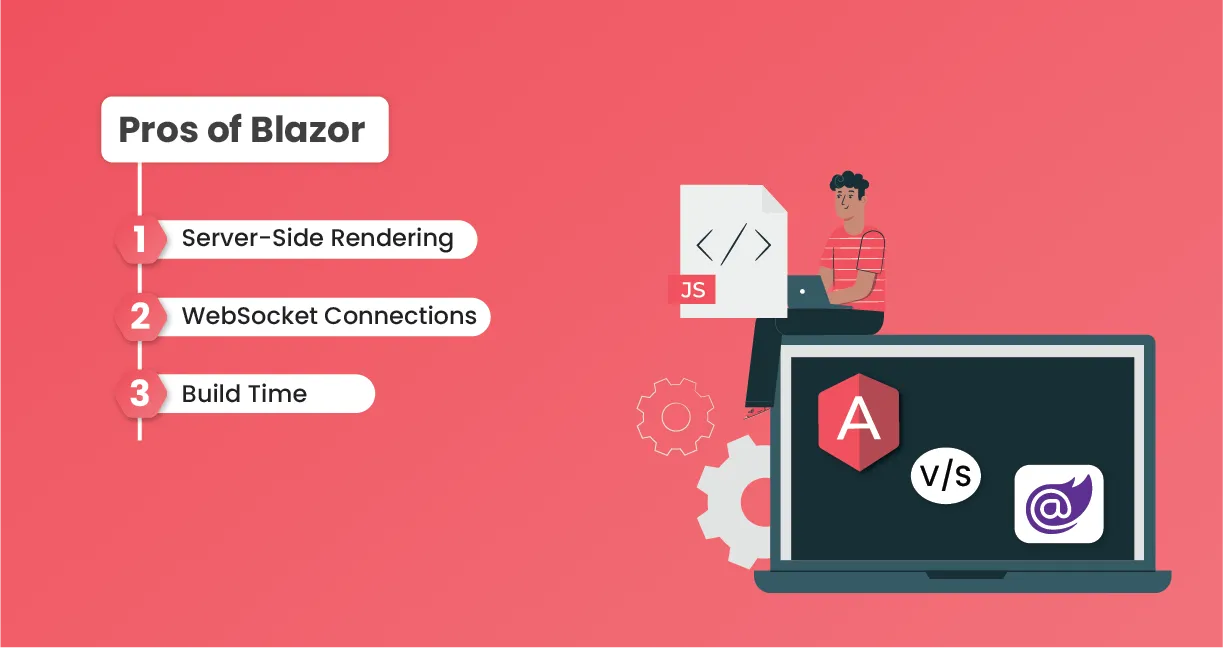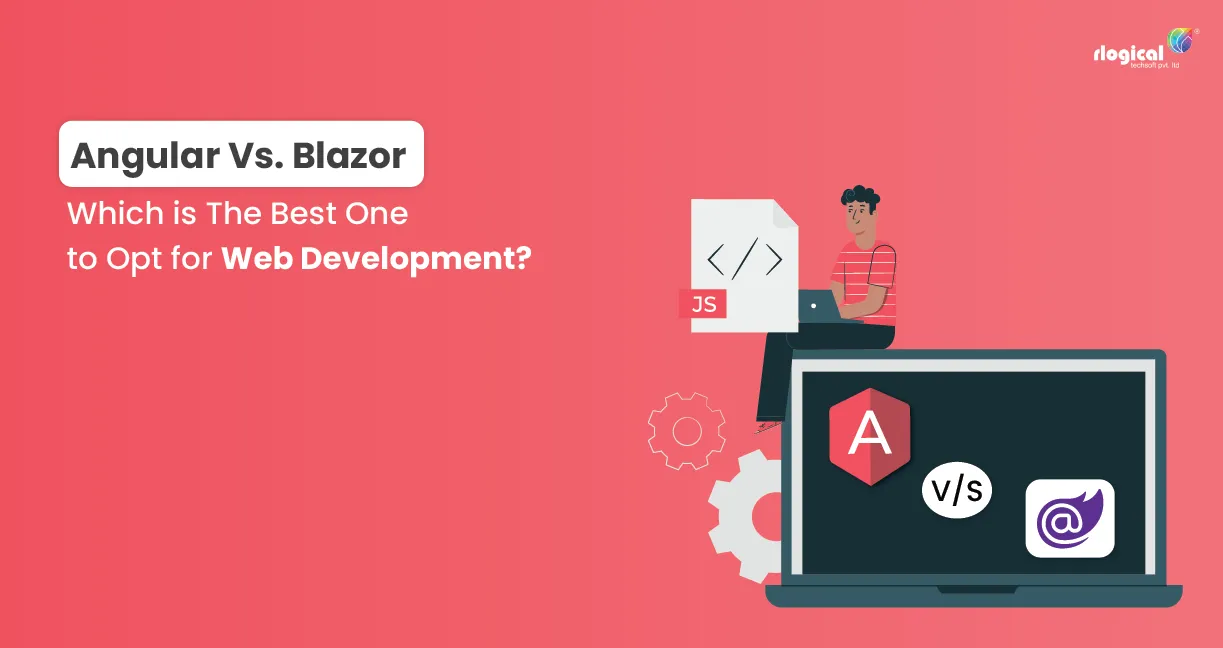
If a C# developer wants to write some codes for web browsers, they have to use JavaScript. But now, the website development world has changed, and programmers do not need JavaScript for top-notch web development. If one ever thought of running .NET without using plugins in the browser, then Blazor is that reality due to its technology known as WebAssembly. In this blog, you will learn about Blazor, its pros, and a lot more compared to the popular AngularJS development services, which developers have preferred for years.
Overview of AngularJS
It is undoubtedly a largely used JavaScript framework that allows you to execute client web apps in browsers and create native apps. Angular apps consist of various components written with TypeScript or JavaScript. These are decorated with directives for handling things such as binding the HTML or markup to data. Your codes written with Angular will not run directly on web browsers. Therefore, you need compilers to change your code to something which the browsers can easily run.
As Angular 9 uses the Ahead-of-time compiler for transforming the code as a part of the publishing process, the browser can easily download and execute the compiled code. Similarly, one can use a Just-in-time compiler for compiling an app in the web browser. When users access an Angular application, the browser’s JavaScript engine starts to run the app’s code.
Overview of Blazor
Blazor is a framework that allows creating client web apps for running in browsers but through C# rather than TypeScript. During Blazor development, the apps arrive along with selected packages which are essential for making everything work. For installing the additional packages, you need NuGet.
From there, you create an application as an array of components through the markup language of Razor with UI logic. The browsers cannot directly execute the C# code. Like the Angular Ahead-of-time approach, you have to depend on C# compilers to compile your Razor and C# codes into various .dll files.
For publishing your application, you have to use .NET’s in-built publish commands that bundle up the app into numerous files like HTML, JavaScript, DLLs, CSS, etc. These files then get published to web servers that can serve these static files. If users access the Blazor WASM app, then the JavaScript file supersedes it. This downloads the runtime of .NET, your app, and its dependency before executing the app using WebAssembly. The framework Blazor then updates the DOM renders elements and forwards events to the app code.
Must Read: Native Apps is the Future of Blazor
Pros of AngularJS
As Angular is JavaScript-based, there are numerous resources that one can work with. Take a bit closer look at them.
1. Maturity
It is a platform that has been here for a longer period compared to Blazor. It is the production-ready framework that supports MVVM or MVC apps and is used by big companies. In tooling, AngularJS is quite ahead. It has the support of VS Code for development, whereas Blazor was implemented recently. When you hire AngularJS developers, they will use Angular Material as a design language for creating extraordinary products. Moreover, there are several design libraries that you can set up, such as Bootstrap.
Blazor is also working on its Material Design, but this will take a lot of time to get Angular’s maturity levels. Angular provides many options in component libraries. It supports certain tooling, including UI components, data libraries, IDEs, etc.
2. Community
AngularJS is popular and has a 63.7k stars rating in the GitHub repository. It is one of the loved frameworks for front-end developers. It is quite difficult for Blazor to get to this popularity. Blazor has a rating of 9.2k starts along with 700 forks which is way lesser than Angular. Another comparison between them is the Stack Overflow. Angular has 224.3k questions, whereas Blazor has overall 2.9k questions. The community strength is greater in Angular.
3. PWA Support
Angular supports PWA or progressive web apps. Blazor still is not that strong in supporting PWAs. Besides remaining stable, developers complain about downloading app sizes during Blazor development. The community remains positive about PWA. It is not that idea but is evolving. Angular allows scoped styles which is an interesting functionality, but Blazor does not have this functionality.
Must Read: Why should you Hire AngularJS Developers for Web App Development?
Pros of Blazor
Blaxor is C# based, and if you know object-oriented programming languages, you will feel it easy. It is better in some parts, and you will get the details below.
1. Server-Side Rendering
This feature comprises app components compiling on a server-side. After that, the generated static HTML is sent to clients. The benefit here is its performance. Prerendered web pages are faster and perform excellently at SEO results.
2. WebSocket Connections
Blazor uses this for flowing data to and fro. Due to such things, the page sizes, when downloaded, remain smaller compared to Angular. The difference may happen due to boilerplate and verbosity codes that Angular brings in its already downloaded bundles. It is faster in sending data through components.
3. Build Time
It is faster in debugging and building. As it takes the Visual Studio advantages and this helps in development as well as debugging faster. It brings the feature of live reloading, which sets up in no time.
Comparison Between Angular and Blazor
Blazor |
Angular |
Based on C# |
Based on JavaScript |
Open-Source Web Frameworks |
Open-Source Web Frameworks |
Support SPA & but PWA is work in progress |
Support PWA & SPA |
Github Stars: 9.3K |
Github Stars: 77K |
Here are the following comparison with details:
1. Production Ready
As Angular is much older, it is extremely production-ready in comparison with Blazor.
2. Learning Curve
Angular has a larger learning curve compared to easy learning with Blazor.
3. Performance
Blazor is less mature in performance.
4. Bundle Size
Blazor supports 622kb, and Angular supports less than 50kb.
Conclusion
Both the frameworks are powerful and solve common issues that the community witnesses. But Angular outshines in some ways in comparison with Blazor. If you do not have an idea about .NET or backend languages, Blazor will be trickier for you. So, you should analyze and select the framework wisely.
Rahul Panchal
Rahul Panchal is the Founder & Managing Director at Rlogical Techsoft Pvt. Ltd. He is a pioneer tech enthusiast who has assisted diverse enterprise solutions with a fresh perspective over the years. From integrating technologies like Full-Stack, .NET, Flutter & PHP, he has harnessed custom web or hybrid mobile app development projects. His creative outlook on the latest models of AI, ML, blockchain, and IoT, has made various businesses attain leading-edge success.
Related Blog
- Best PHP Frameworks For Your Web Development Project: PHP Tools Highlight in 2025
- How Much Does eCommerce Startup Cost - Guide to Calculate and Plan Budget
- How to Integrate AI and ML With .NET Applications to Skyrocket in Marketplace?
- Java or Dot Net: Which is Better for Web App Development?
- Why is the ASP.NET platform so popular for customized web apps?
Categories
- All
- AI Development Services
- Amazon Web Services (AWS)
- ASP.Net Development
- Azure Web App
- Big Data Analytic
- Customize
- Digital Marketing
- Drupal Development
- E-commerce web development
- Education Mobile App Development
- Enterprise Application
- Event Management App Development
- Fintech
- Fitness App Development
- Food Delievery
- Front-End Development
- Grocery App Development
- Healthcare App Development
- Hire Dedicated Developers
- Hotel Booking App
- IT Industry
- JavaScript Development
- Mobile App Development
- On Demand App Development
- On Demand Healthcare App Development
- PHP Development
- POS Software Development
- Real Estate Mobile App Development
- Retail Business App Development
- Salesforce
- Social Media Development
- Software Development
- Technology
- Transportation App Development
- UI/UX Design
- Web Design
- Web Development
- Web Services
- Web/Data Scraping Services
- WordPress




 Rahul Panchal in ASP.Net Development
Rahul Panchal in ASP.Net Development 